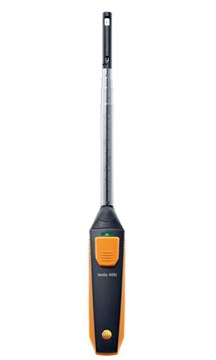

There are often calibration, compensation, and correction issues to address. Regardless of the sensor used, each of these requires some way to relate the apparent measured data to the actual speed this can range from a modest task to a complex one. There are also pressure-based anemometers such as the aircraft pitot tube, which relies on the differential pressure between a tube exposed to the moving air and one isolated from it.
#ANEMOMETER HOT WIRE PORTABLE#
Vane or propeller anemometer you can even buy a convenient hand-held version (Figure 2).įig 2: The vane anemometer uses a propeller in the flow stream and is available in many versions and models, including as a handy portable version.As a result, many other techniques and sensors have been developed to measure fluid speed, among the many options are: While the cup anemometer is easily understood, it’s obviously not suitable for many situations such as use in restricted pipes or even blood vessels.


Fig 1: The simple spinning-cup anemometer is well-suited for wind measurements but is obviously not viable for many other fluid-speed situations. In fact, measuring the velocity (speed vector) of fluids, usually but not only air, is a very common instrumentation requirement, perhaps second only to temperature(the most-commonly measured variable). This is a “tried and true” way to measure large-scale wind speed. You are undoubtedly familiar with the classic wind-speed anemometer with three cups rotating as the wind blows, while a tachometer reports the revolutions rate (Figure 1). The hot wire anemometer for measuring fluid speed offers unique advantages but also has some challenging use issues.


 0 kommentar(er)
0 kommentar(er)
